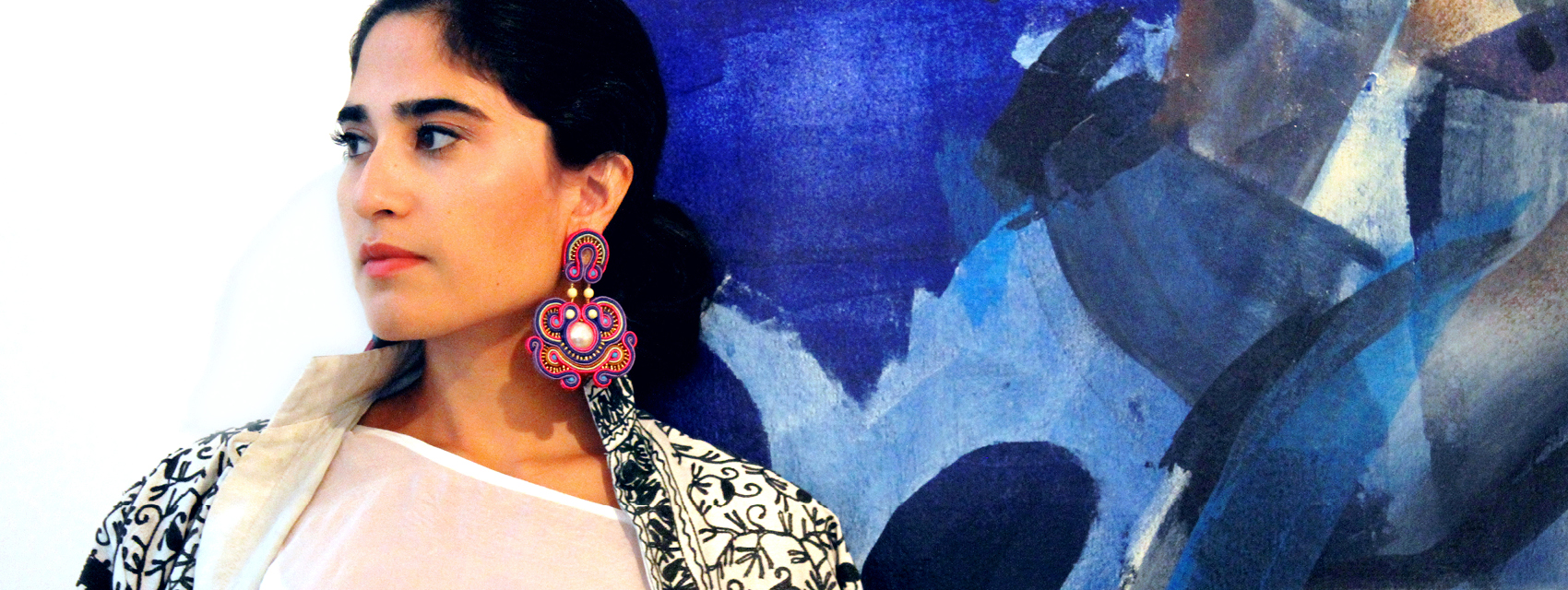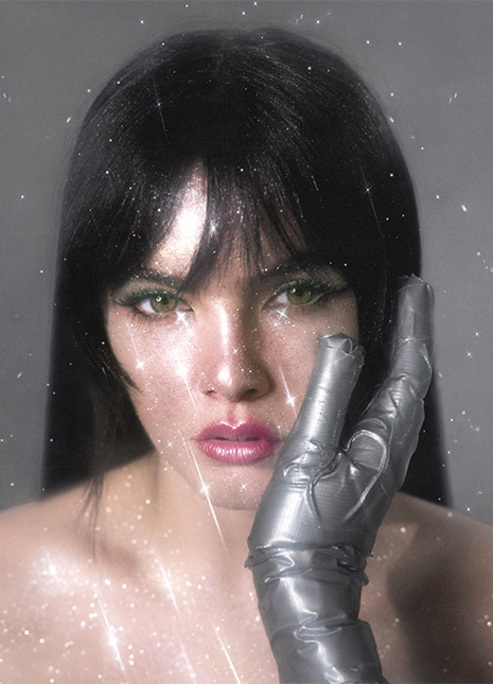We Talk Art, Creativity And Following Your Passion With Anahita Sadighi
Meet the art dealer making a splash in the Berlin art scene.
Anahita Sadighi is a Berlin-based art dealer originally from Iran who specializes in Asian and contemporary art. She opened her first gallery, Anahita Arts of Asia in 2015 at just 26 years old and her second, Anahita Contemporary, two years later. Now 31, Anahita has built a reputation for herself as the German capital’s youngest art dealer. Daring, ambitious, and successful, she is driven by her passion for communicating through art and is not afraid to challenge the status-quo of a traditionally male-dominated field.
As an Iranian woman living in Europe, Anahita feels compelled to provide a platform for intercultural dialogue and to bring awareness to the powerful impact of female artists throughout history. Whether she’s hosting events at Anahita Arts of Asia to showcase the works of female Persian and Arabic poets or demonstrating the knowledge and wisdom passed down by female artists through ancient weavings, Anahita is always striving to encourage visitors to her galleries to interact with non-European art and history and to explore new perspectives.
We were lucky enough to get the opportunity to talk with Anahita about her career, passions, and inspirations.
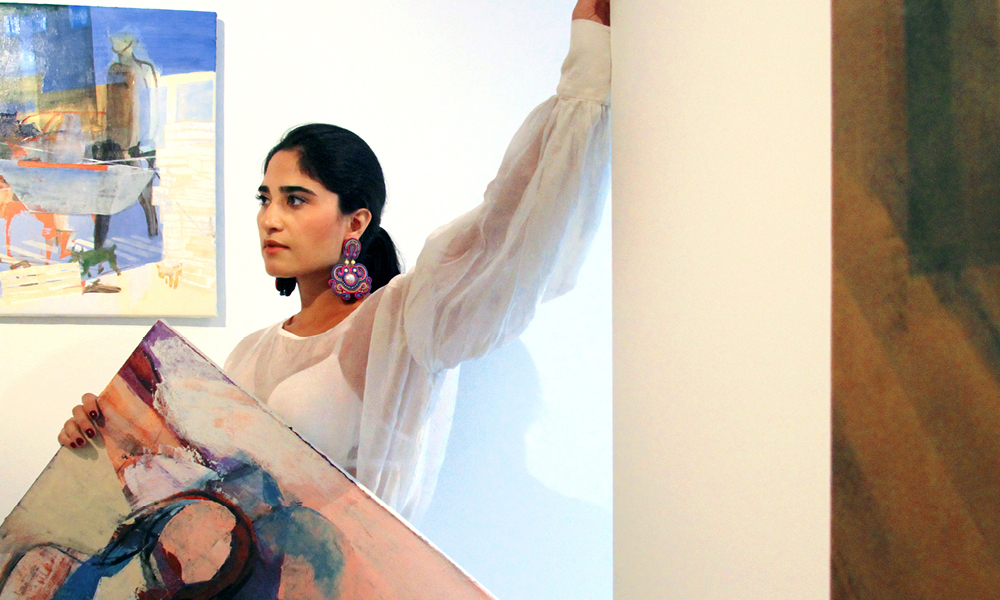
Hi Anahita, could you please tell us a little about yourself and how you came to be an art dealer?
I grew up with art all my life. Art from all over the world. My father is a passionate art collector and artist, and from a very young age, he led me to this world in a playful way. His way of life and fascination for non-European art, different cultures, and history, in general, had a great influence on me.
I first directed this influence into my musical education. Initially, I studied piano and always wanted to become a pianist. However, I realized that my growing fascination with art was leading me to a new chapter in my life. Initially, I was fascinated by ancient works of art, archaeology, and cultural history. After several stays abroad it became clear that I wanted to pursue an independent and unconventional activity. So I opened my first gallery, Anahita Arts of Asia, and initially concentrated on antique art from Asia and the Near East. I also incorporated my interest in my native roots and the dialogue between the countries along the Silk Road, whose artistic testimonies can be found in my gallery.
What are the main themes of the artwork in your first gallery, Anahita Arts of Asia?
The main themes of the gallery are East-Asian art, Buddhist art, Chinese furniture, Japanese woodblock prints, Islamic art, textiles, and carpets.
Two new themes have been recently added to our gallery program; Pre-Columbian art and African tribal art. We are the only gallery in Berlin and in all of Germany, that deals with these thematic scopes. I am not sure if I should be proud of that or if this speaks volumes about the limited and Eurocentric scope of the art scene here.
What inspired you to delve into contemporary art and open up your second gallery, Anahita Contemporary?
Contemporary art is a world of its own and it has always been relevant, by which I don't mean the appreciation of contemporary artists, but the significance of contemporary works of art as contemporary witnesses. An interested art dealer cannot escape this. On the contrary, the confrontation of contemporary art and living artists offers a new perspective on antiques and vice versa. The balancing act is not easy, but if it succeeds it is ingenious and opens up new possibilities to look at art.
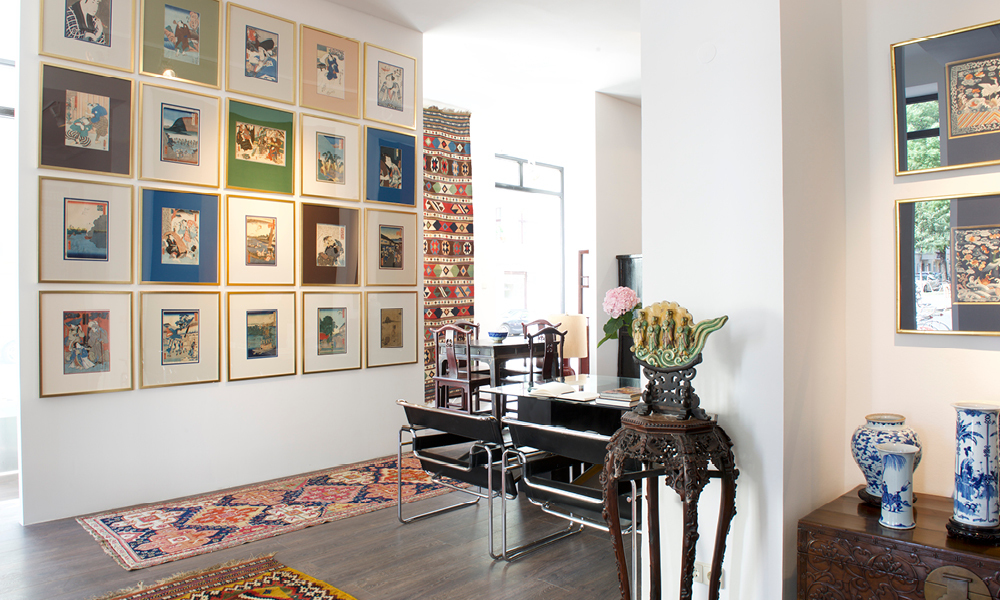
From where do you source the artifacts in your galleries and what does the process involve?
I work closely with private art collectors and therefore source my artifacts primarily from private collections. When acquiring a new work of art I need to validate the authenticity of the artwork. After a successful analysis, I will acquire the artwork and present it at the gallery.
Most objects come from European collections, mainly from Germany, England, France, and Belgium. Sometimes I visit places that are quite mysterious. For example, the estates of some of the private collectors are quite similar to what you see in movies. You really get in touch with hidden treasures, forgotten jewels that have been locked away from the public eye for decades. The stories behind the objects and how they found their owners are often adventurous and fascinating. This story, an object’s journey, becomes part of its soul and its legacy. These stories are a valuable part of my daily business. I’m kind of like a modern-day Indiana Jones — but without the whip.
What does a normal day at work look like for you?
I love starting my day by reading, which is basically my way of meditating and taking some time for myself before I go to work. It’s almost holy to me to cultivate this routine.
I usually spend a good amount of time at the galleries, working on inquiries, new acquisitions, event and exhibition planning, and social media management. Communication with my clients and artists is key and takes up a lot of time. I design the arrangements for the exhibited art mostly by myself so I often re-decorate the gallery and enjoy the physical work as it can be quite satisfying. I am not a fan of spending all day in front of the computer or on one task. I need variation.
I often have a work-related lunch or dinner date, as networking and socializing are important aspects of my business.
From where do you usually draw inspiration?
Of course, that always changes, but I like being outdoors. I also like to go out. Otherwise, it is music, books, my artists that inspire me. But the weekly market around the corner can also be inspiring. Or a new meal, a flower arrangement, a chat with friends. A dream. A kiss.
In the current crisis, I am learning that we do not necessarily need to draw inspiration from the outside world. We can draw it from ourselves and our own feelings. We need to look inside more. Maybe 2020 has taught us that.
What does creativity mean to you?
Creative expression for me means drawing from the wealth of our thoughts, wishes, and ideas to give them artistic expression. It can be so spontaneous and diverse – from curating exhibitions and writing and performing texts, to fashion, music, and relationships. Interpersonal relationships are perhaps the most important expression of creativity, in my opinion.
For four years, I have also been organizing regular poetry nights in my gallery. Myself and my best friend [actress Susana AbdulMajid] present Persian and Arabic literature, mostly written by female authors and poets who prove that great literature is not the exclusive domain of men.
What are your future ambitions for Anahita Arts of Asia and Anahita Contemporary?
Working with art constantly creates new visual and mental spaces and connections. I felt somehow called to create a huge modern stage set with my two thematically different galleries and to demonstrate what is possible. My vision is to share my love for art and antiques with the global community and to inspire the next generation of art collectors. As an Iranian in the middle of Europe, I am also interested in challenging our Eurocentric and male-dominated worldview and offering new perspectives.
I hope that we can get more involved with the different cultures this planet has to offer and learn to live more peacefully and be more appreciative of multi-cultural communities. Intercultural dialogue is important, not as a trend, but as an attitude to life.
Finally, do you have any advice for young people who want to pursue their passion but aren't sure where to start?
Have the courage to take an unconventional path. Trust in your vision and do not be put off by the challenges of working independently. Instead, draw from the freedom to create new ideas and content. Work together with other women (and men). Strengthen and inspire each other. Maybe you can start with a small exhibition or experiment with working in a collective. The power often lies in the act of doing.
Thank you so much for speaking with us, Anahita!
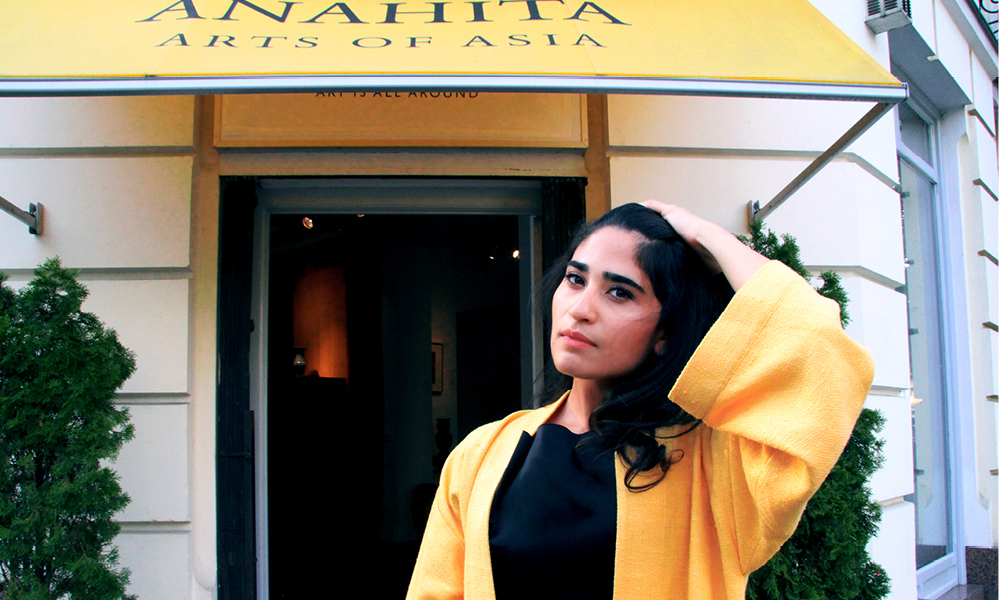
Anahita’s galleries are currently operating at different hours than usual due to the COVID-19 pandemic, and some exhibitions and events have been put on hold. However, she is now sharing regular Poetry Night videos over on the Anahita Arts of Asia Instagram account.
To find out more about Anahita’s galleries and to stay up-to-date on her latest exhibitions and events, check out the Anahita Arts of Asia and Anahita Contemporary websites.
Photography: Alessia Cocca
Styling: Henriette von Grünberg
Next up, We Chat To Editor In Chief of NYLON Germany, Edith Loehle



